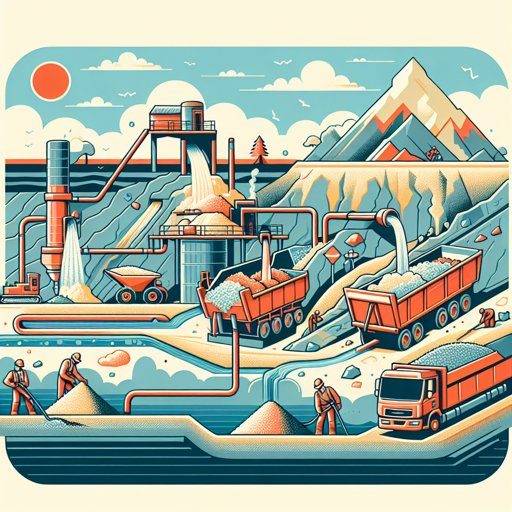Unearthing the Secrets of Clay Mining
Journey into the world of clay extraction and discover the fascinating processes involved.

Unearthing the Secrets of Clay Mining
Introduction
Clay, a seemingly ordinary resource, has been a crucial part of human civilization for thousands of years. From pottery and brick-making to a wide range of industrial applications, the value of clay is immense. But have you ever wondered how this versatile material is extracted? This article delves into the fascinating world of clay mining, unraveling the methods and processes involved in extracting clay from the Earth.
The Science Behind Clay Formation
Clay is formed over long periods through the weathering of rocks. The weathering process involves the breakdown of rock into its constituent minerals, which are then transported by water and deposited in layers. Over time, these layers compact under their weight to form clay.
Clay Mining Methods
There are two primary methods of mining clay: surface mining and underground mining. The choice of method depends on factors such as the depth and nature of the clay deposit.
Surface Mining
Surface mining involves removing the overlying material to expose the clay deposit. This process can be done through open-pit mining, strip mining, or mountaintop removal. Let’s delve into each of these methods:
-
Open-Pit Mining: This is the most common method used for clay extraction. A large pit is excavated, and the clay is removed in layers.
-
Strip Mining: Here, horizontal strips of clay are removed one after the other. This method is often used when the clay deposit is near the surface.
-
Mountaintop Removal: This method involves removing the entire top of a mountain to expose the clay deposit. It’s a drastic method and is generally used only for large deposits.
Underground Mining
Underground mining is used when the clay deposit is deep underground. This method involves creating tunnels or shafts into the ground to reach the deposit. The clay is then mined and brought to the surface.
The Process of Clay Mining
| Steps | Description |
|---|---|
| Exploration | The process begins with geological surveys to locate clay deposits. |
| Extraction | Once a deposit is located, the clay is extracted using one of the mining methods described above. |
| Processing | The extracted clay is then processed to remove impurities and to achieve the desired properties. |
| Transportation | The processed clay is then transported to various industries for use. |
“The story of clay is a story of earth, and of the transformations that come from human endeavor.” - Anonymous
The Environmental Impact of Clay Mining
Clay mining, like any other mining activity, has environmental impacts. These include habitat disruption, soil erosion, and water pollution. However, responsible mining practices can mitigate these impacts. Reclamation of mined areas, for example, helps restore the land after mining.
Learn more about the environmental impacts of clay mining
Conclusion
Clay mining is a complex process that involves a deep understanding of geology and mining techniques. While it has its environmental challenges, responsible practices can ensure sustainable extraction. As we continue to rely on clay for various applications, understanding its extraction process becomes even more essential. Through this article, we hope you’ve gained a newfound appreciation for the fascinating world of clay mining.